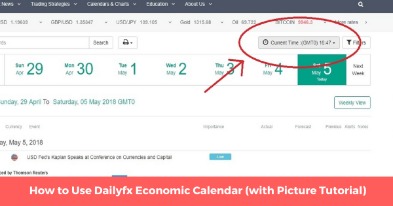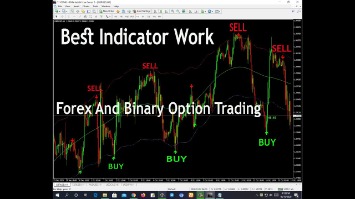
Traders identifying bullish reversal signals would want to look for trades that benefit from the security’s rise in price. Also note how momentum increased dramatically once price broke above the resistance line, which signaled an end to the pattern. A target could again have been placed at the level where the rising wedge started from with a stop loss below the final lower low. Wedge patterns are particularly interesting because they can indicate both potential reversals and continuations in exchange rate trends depending on the exchange rate or price action context in which they appear. In this comprehensive guide to trading wedge patterns, Benzinga aims to equip forex traders with a robust understanding of how to go about trading forex wedge patterns. This can make broadening wedges appealing to swing and day traders, as there is lots of short-term volatility.

Each element provides a particular insight on the direction of the stocks future trend. Pullbacks into the pattern after breakout do occur regularly so place your stops accordingly. The Descending Broadening Wedge is similar to the Ascending Broadening Wedge pattern and the descending variety of wedge broadens downwards.
What is the broadening wedge pattern?
When a security’s price has been falling over time, a wedge pattern can occur just as the trend makes its final downward move. The trend lines drawn above the highs and below the lows on the price chart pattern can converge as the price slide loses momentum and buyers step in to slow the rate of decline. Before the lines converge, falling broadening wedge the price may breakout above the upper trend line. A rising broadening wedge pattern is a type of expanding wedge in which price action moves upwards between support and resistance lines that a pointing away from each other. You can either trade the movement between the lines, or wait for a breakout in either direction.
- Tall and wide patterns work better than short and narrow patterns.
- This means that the breakout should happen at the inferior trend line, and results in a continued price movement.
- In this course, we will explain what is wedge pattern, learn about broadening wedges, and tell you how to trade them in the forex market.
- After the two trendlines have been formed the pattern can be identified.
Interpreting broadening wedges involves understanding that the expanding range signifies a divergence in market opinions. This duality presents both bullish and bearish scenarios, adding complexity to traders’ decision-making when using this pattern, so waiting for a breakout is essential before trading based on this pattern. The wedge trading strategy has a signal line, which could be the upper (support) or the lower (resistance) line. However, if there is a rising wedge pattern, then the signal line would be the lower line.
– Descending Broadening Wedge
A long breakout candlestick shows that bearish sentiment was gaining momentum, and a strong downtrend was likely to follow. Because the trend was losing steam and a reversal was likely to occur, we could look for a short entry when the price broke outside the formation. The horizontal trend line can act as a support or resistance level, depending on where the formation appears on a chart.
The convergence serves as a signal, prompting traders to prepare for a potential breakout. Once the breakout occurs, traders can execute their trades with calculated precision to profit from the anticipated market reversal that a wedge pattern indicates. Identifying optimal trade entry and exit points to take advantage of a wedge pattern generally requires taking a strategic analytical approach.
How can I accurately trade a Falling Wedge pattern?
The resistance is the level where the sellers are likely to step in and start selling the security. The support is the level where the buyers are likely to step in and start buying the security. However, you will need to stay flexible until the formation fully develops. https://g-markets.net/ Yarilet Perez is an experienced multimedia journalist and fact-checker with a Master of Science in Journalism. She has worked in multiple cities covering breaking news, politics, education, and more. Her expertise is in personal finance and investing, and real estate.
When descending broadening wedge formation arises in an uptrend direction, then the trend will continue in the same direction as the previous trend. Partial declines commonly occur in broadening descending wedges . The price bounces off the resistance, moves towards the support without reaching it, and then goes back to the resistance where we can expect a potential breakout upwards. Note that a partial decline always starts from the test of the resistance.Partial rises and declines can offer a better price to buy/sell instead of waiting for a breakout.
Trading Strategy 3: Watching for Convergence
An ascending broadening wedge is a bearish chart pattern (said to be a reversal pattern). An ascending broadening wedge is confirmed/valid if it has good oscillation between the two upward lines. The upper line is the resistance line; the lower line is the support line. A wedge is a price pattern marked by converging trend lines on a price chart. The two trend lines are drawn to connect the respective highs and lows of a price series over the course of 10 to 50 periods.
Without volume expansion, the breakout may lack conviction and be susceptible to failure. Two touches to form the horizontal trendline and two touches to form the sloping trendline. The lower highs make a falling trendline, this forms the upper boundary to our pattern. The lower lows make a lower falling trendline, this forms the lower boundary to our pattern. The breakout occurs when price closes on the outside of the pattern, above the upper trendline or below the lower trendline. Often the trendline touches are one to the top and one to the bottom, one to the top and one to the bottom.
Trading Strategy 2: Indicator Alignment
Falling wedge patterns can be found in both uptrends and downtrends, but taking notice of the prevailing trend will help you determine whether the falling wedge signals a continuation pattern or a reversal pattern. In both cases, falling wedge patterns are generally resolved to the upside. Forex traders often use chart patterns to obtain strategic insights to help guide their currency trading activities. Among the array of available chart patterns used in technical analysis, the wedge pattern stands out as a reasonably reliable tool for predicting potential exchange rate or price movement activity.
DFS Stock Price Prediction:Is DFS Heading To New Low? – The Coin Republic
DFS Stock Price Prediction:Is DFS Heading To New Low?.
Posted: Sat, 22 Jul 2023 07:00:00 GMT [source]
There comes the breaking point, and trading activity after the breakout differs. Once prices move out of the specific boundary lines of a falling wedge, they are more likely to move sideways and saucer-out before they resume the basic trend. Here, a common strategy for placing your stop loss is to put it just below the market’s previous high – the last time it tested resistance.
Broadening wedges are characterized by price variations laying within one support and resistance , both having the same direction and broadening over time. As such the apex of the support/resistance in a broadening wedge is located to the left.Broadening wedges must not be confused with other broadening formations. While they all have a broadening characteristic they can have different identification rulesBroadening wedges are classified depending on the direction of the support/resistance. Usually, a rising wedge pattern is bearish, indicating that a stock that has been on the rise is on the verge of having a breakout reversal, and therefore likely to slide.
